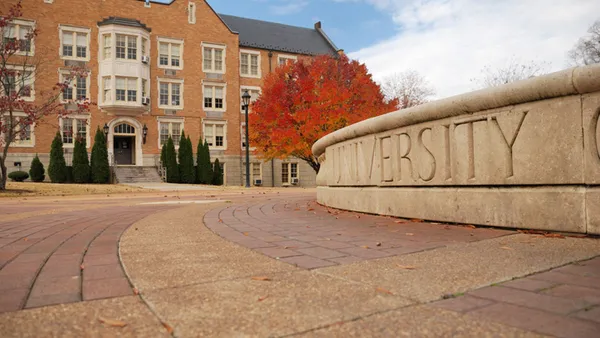Dive Brief:
- A South Dakota task force laid out nearly three dozen recommendations in a report this week that aim to cut costs at the state's six public universities, including by sharing administrative services.
- The suggestions run from colleges sharing services, such as for human resources or food service contracts, to determining which programs are being duplicated and collaborating on online course delivery.
- The report, which state lawmakers commissioned, has drawn criticism from college employees and students who worry legislators are hostile toward higher education, the Grand Forks Herald reported.
Dive Insight:
Lawmakers charged the South Dakota task force with reviewing whether it was feasible to merge services and programs, as well as to study other measures for reducing expenses. The resulting cost-cutting recommendations are far-reaching.
It's just one example of a public higher education system being pushed to reduce its expenses to counter flagging state support and changing student needs.
Other states that are predicted to face sharper declines in the number of traditional-age college students than South Dakota, including Connecticut and Pennsylvania, are merging colleges to better market their offerings and save money through shared services. Yet such moves often draw heavy criticism from employees and students who want their institutions to retain their brands, identities and local focus.
However, South Dakota isn't going as far as merging colleges. In the report, the system's board of regents recognized its responsibility "for appropriate stewardship of financial resources from the state" but also the desirability of "unique, differentiated institutions."
The task force recommends that separate undergraduate nursing programs at South Dakota State University and the University of South Dakota be combined into one offering that shares facilities. It also suggests the system replace identical online course sections at multiple institutions that have low enrollments with just one section.
The report also spotlights several services that could be shared across multiple campuses or systemwide. For instance, the task force recommends a systemwide food service contract. And it suggests Black Hills State University and the South Dakota School of Mines & Technology, which are located in towns around 45 miles apart, should better collaborate. They could do so by securing energy conservation grants and consolidating purchasing functions.
One campus could be threatened. The task force recommends the system's governing board explore alternative models to provide financial viability for the struggling Community College for Sioux Falls, where enrollment has spiraled downward. Those ideas include the potential renovation or sale of two buildings on campus.
The task force is also targeting courses with low student headcounts. It suggests establishing policies that cap at 18% the number of low-enrollment courses a college can have.















